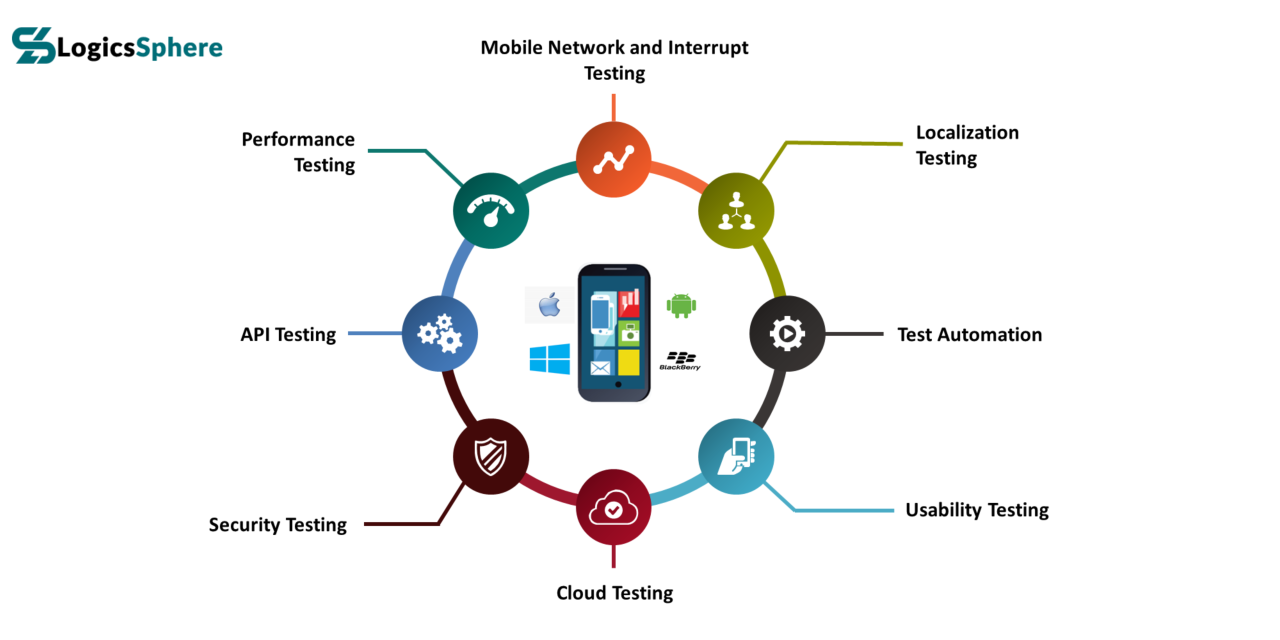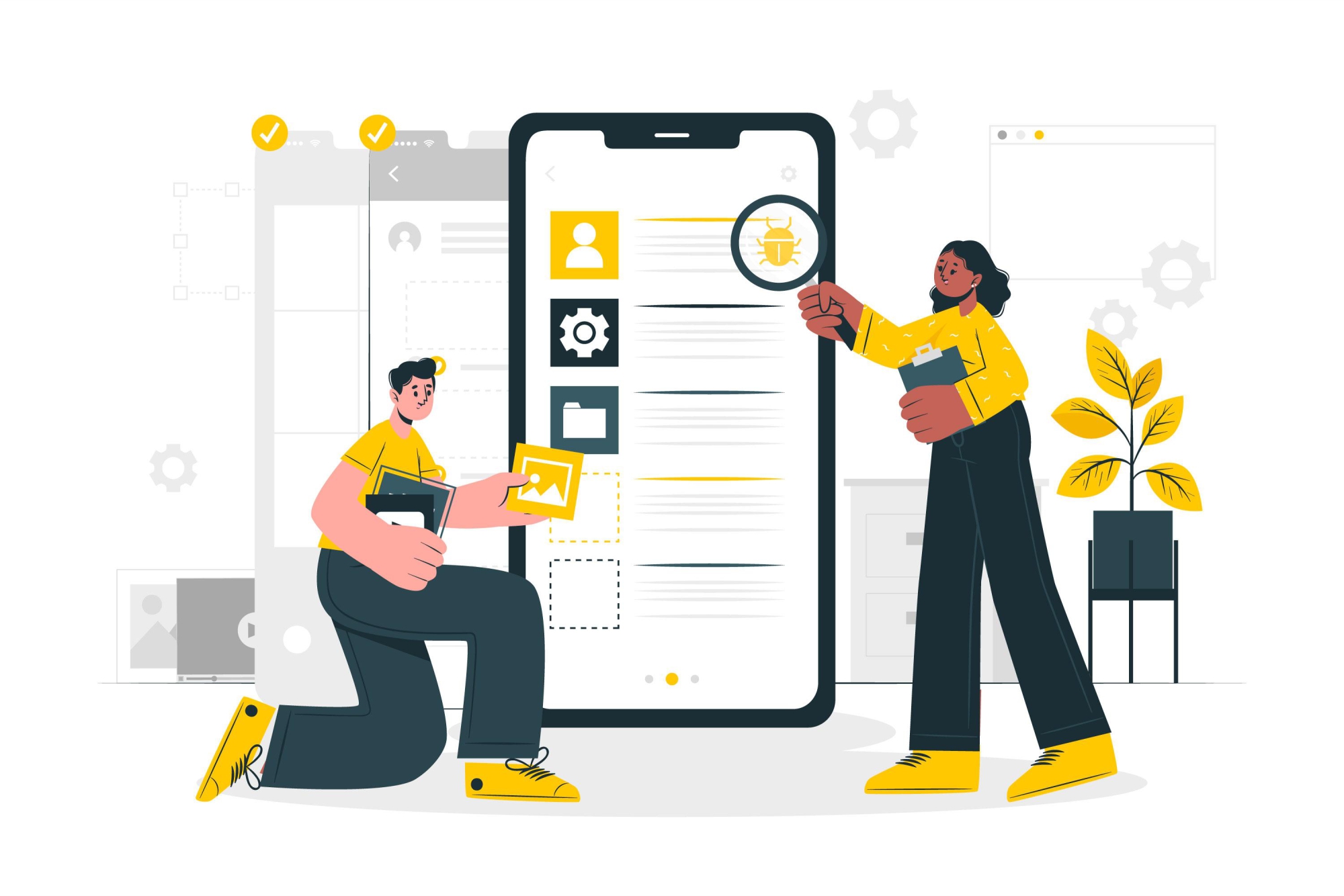Introduction
Mobile app users always expect great performance, which is why the development of applications that have no ‘bugs’ and other issues is the key to success in rapidly developing this kind of application. It is a crucial step to check the usability and performance of an app before it is deployed to various smart devices and networks.
However, it is essential to note that there are peculiar errors in tester approaches to development, bugs, and performance, as well as security that may hamper the success of an application.
This time, we’re going to have a deep look at the top 10 most frequent mobile app testing errors as well as suggestions for how to avoid them.
Mobile App Testing Background
Mobile app testing entails a set of processes that are intended to determine the suitability, workability, and reliability of applications in the mobile environment. It confirms that the app is effectively meeting the necessary features and quality in its execution by the end user.
There are several types of testing that are used while testing the mobile apps. These are functional testing, performance testing, usability testing, and security testing. Each type targets various aspects of the app; it covers the need to minimize risks and guarantee its stability and convenience.

Top 10 Most Common Mobile App Testing Mistakes (and How to Avoid Them)
Insufficient Test Coverage
Mistake:
This can be seen when the core functionalities of the product or service are emphasized while disregarding other potential uses of the product or service. This often results in hidden bugs and problems that may cause problems with the proper functioning of the app and inconvenience the users.
How to Avoid:
- There is a need to prepare a detailed test plan with regard to the various aspects of the app that should be tested.
- Test cases should be prioritized based on the risk involved and the impact on the users.
- Change the test plan to correspond to new changes in the app to develop new features and functionalities as well.
Ignoring Cross-Platform Testing
Mistake:
Lack of testing the app on all platforms (e.g.- Android and iOS) and may lead to platform-specific issues not being discovered.
How to Avoid:
- It is important to test the app across multiple devices and operating systems to know whether the app is compatible with the different devices.
- Use cross-platform testing tools such as Appium, Xamarin Test Cloud, or others that may be available.
- Keep copies of devices in your device lab or opt for cloud testing services for a range of devices.
Neglecting Performance Testing
Mistake:
Failing to take into consideration how the app behaves under different conditions, among them are several users using the same app at the same time, limited network access, decreased responsiveness, or actual crashes of the app.
How to Avoid:
- Perform load and stress testing to determine how the app operates under pressure from a large number of users reaching a peak usage rate.
- Test applications in various networking scenarios, particularly when these conditions are low bandwidth.
The two possible strategies, which align well with Henshbos focused objectives, include-
- Efficient code utilization in software applications
- The allocation of resources in a way that facilitates the achievement of optimal system efficiency.
Skipping Usability Testing
Mistake:
This problem consists in overemphasizing the technical side while underplaying the aesthetic aspect, which often results in an overly complex and difficult-to-navigate design.
How to Avoid:
- User testing should be conducted in order to get feedback as to how users of the app perceive the interface and functionality of the new app.
- Collect opinions and reactions of the users to the appearance and navigation on the utilized app.
- The ideas and suggestions made by the user have to be put into practice to make the experience as comfortable as possible.
Lack of Security Testing
Mistake:
Not testing the app for security flaws; these flaws can cause leakage of user information and subsequent loss of the customer’s data.
How to Avoid:
- Conduct a security audit with a view of establishing areas of weakness and potential risks.
- Ensure you encrypt the data and use secure methods of authenticating the users whenever they are inputting their details into the system.
- It is important to be up to date about the current security practices and trends in order to protect the app.
Not Testing for Localization
Mistake:
Not considering testing that might involve other languages and regions, can lead to such problems as improper formatting and lack of understanding of some cultural references.
How to Avoid:
- For instance, using the global variable Locale, test the provided application under different locales and languages to confirm its global functionality.
- The formatting for dates, currency, and text should be consistent with the international region needed for a specific purpose.
- This involves verifying any translation or adapting to cultural differences to ensure that the experience as a user is as fluent as desired.
Poor Documentation
Mistake:
Lack of clear documentation of test cases and results and therefore a lot of misunderstanding and many subsequent mistakes.
How to Avoid:
- It is therefore important to keep detailed and organized test documentation that will help in tracking the progress and potential problems.
- Tools such as test management tools for tracking test cases and results are very helpful in making the process easier.
- It is also recommended to review and modify documentation on a regular basis in order to adapt to the changes in the app and testing process.
Relying Solely on Automated Testing
Mistake:
Relying just on automated testing and ignoring manual testing, might result in interface and user experience problems.
How to Avoid:
- To cover every facet of the software, mix automated and manual testing methods.
- Save time, use automated tests for regression and repetitive testing.
- Test exploratory and usability manually to guarantee a human viewpoint.
Inconsistent Testing Environments
Mistake:
Testing in erratic or non-representative settings can result in issues that go unnoticed and show up in the production environment.
How to Avoid:
- For precise findings, standardize testing settings to resemble production settings.
- Replicate environments consistently with virtualization or containerization.
- Update and validate the testing environment often to correspond with the most recent production configuration.
Inadequate Bug Tracking
Mistake:
Not keeping good track of and controlling found bugs, which results in unsolved problems and worsened app quality.
How to Avoid:
- To effectively record and manage defects, put in place a strong bug-tracking system.
- Sort and rank bugs according to importance and severity to guarantee urgent fixes of important problems.
- Maintaining app quality requires consistent follow-up and resolution of reported issues.
Suggestions or Recommendations
- Continuous Integration and Continuous Deployment (CI/CD): Put CI/CD pipelines into place to make code changes that are regularly integrated and to speed up the testing process.
- Beta Testing: Use beta testers to get input from the actual world and find problems that might not show up in a controlled testing setting.
- Awareness-Building: Continually educate your testing staff on the newest methods, technologies, and best practices for testing mobile apps.
User-Centric Approach: Give testing scenarios that most affect the user experience top priority and never forget the end user.

Conclusion
Delivering excellent, intuitive apps requires efficient mobile app testing. Development teams may improve their testing procedures dramatically by avoiding these typical errors and putting the offered fixes into practice. This guarantees a stable and strong app, which in the cutthroat app industry also increases user pleasure and success. Recall that the basis of a good digital experience is a tested app.




